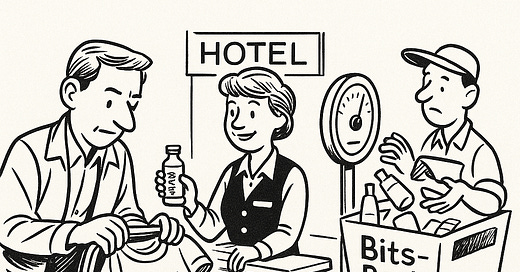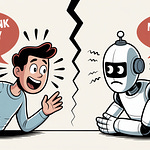Title: “Variational Lossy Autoencoder”(VLAE)
Authors: Xi Chen, Diederik P. Kingma, Tim Salimans, Yan Duan, Prafulla Dhariwal, John Schulman, Ilya Sutskever, Pieter Abbeel
Published: Submitted on 8 Nov 2016 (v1), last revised 4 Mar 2017 (v2)
Why you should care (whether you’re an ML pro or just AI-curious)
Generative models juggle a Goldilocks problem:
Throw out too much: pictures look mushy.
Remember absolutely everything: files get huge and run slow.
VLAE’s middle path: save the global structure and let a second network sprinkle in texture only when it’s time to render.
That recipe is now baked into Stable Diffusion, on-device photo upscalers, and even tiny robots that need quick scene summaries.
Core innovation in one breath
Fuse a Variational Autoencoder with an autoregressive decoder and an autoregressive-flow prior, then train them with a bits-back coding trick so the latent code only stores what the decoder can’t guess.
How VLAE Works
When an image enters VLAE, the encoder first writes a concise “blurb” that captures the scene’s big-picture facts—rough shapes, layout, dominant colors. Think of it as a traveler jotting a packing list before a weekend trip. That blurb (the latent code) is then run through an autoregressive-flow prior—a smart rule-set that models dependencies inside the code, trimming redundancies the way a savvy friend reminds you that if you’re packing sandals you probably don’t need an umbrella.
Next, a PixelCNN-style decoder—whose vision is intentionally limited to small patches—reads the blurb and paints in the pixel-level texture. Because the decoder can’t see the whole image at once, it relies on the latent summary for the global structure, yet it’s free to invent the fine grain locally (much like a hotel providing toiletries you chose not to pack).
Finally, a training trick called bits-back coding acts as airport staff weighing your suitcase: any detail the decoder and prior can already predict is treated as extra baggage and tossed out. This forces the latent code to stay lean and contain only what’s truly necessary. The result is a model that stores just enough information for faithful reconstruction while keeping files compact and generation fast.
Take-home ideas (stick them on the fridge)
Separate structure from texture—move pixels last.
Autoregressive-flow prior keeps the latent tidy and expressive.
Bits-back coding is the built-in baggage-weight cop.
#AI #DeepLearning #GenerativeModels #VLAE #MachineLearning #DataCompression #LatentSpace #OnDeviceAI
















Share this post